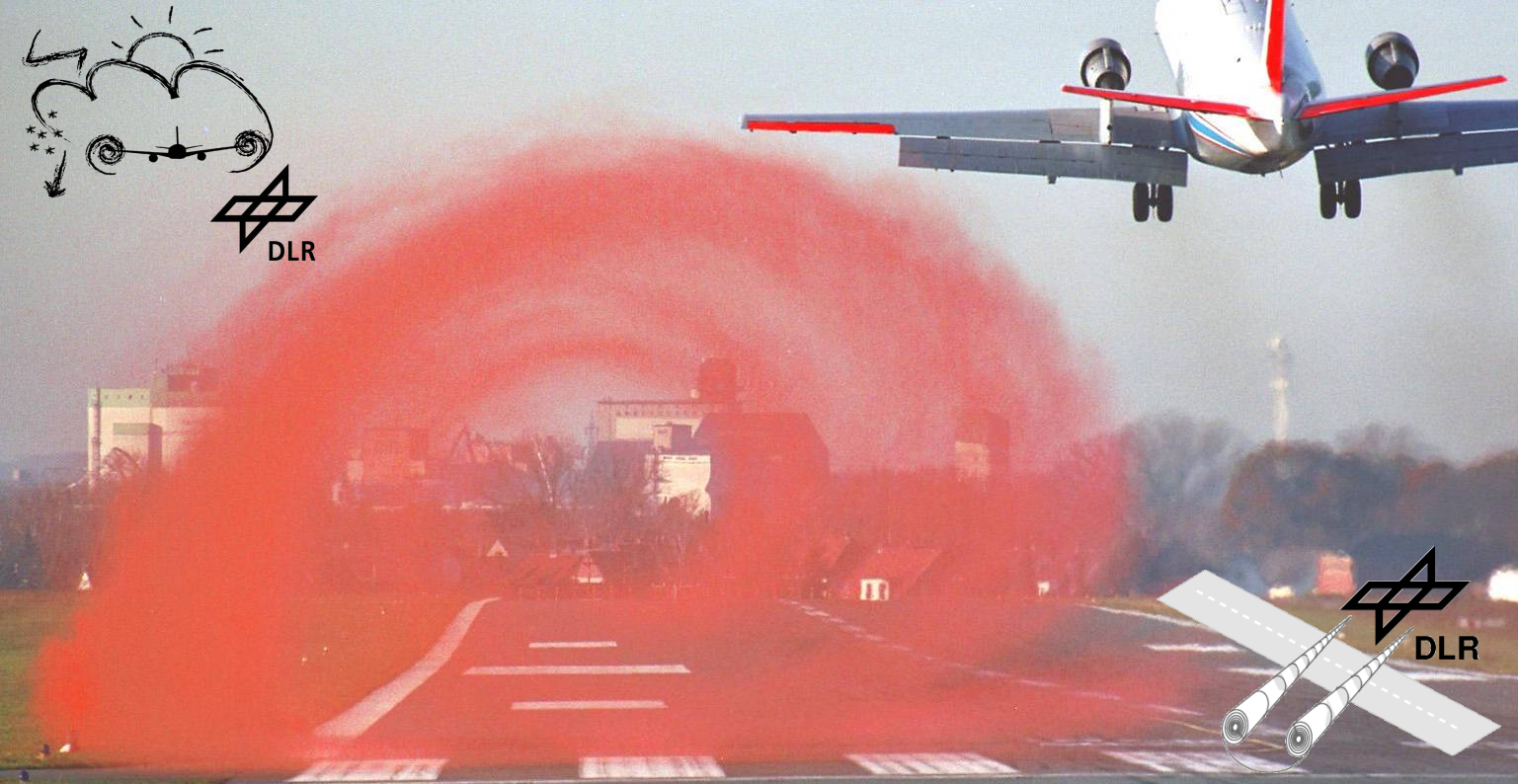
Project Weather & Flying - Work Package Wake Vortex
|
Thomas Gerz,
Frank Holzäpfel,
Klaus Dengler,
Robert Baumann,
Ingo Hennemann,
Markus Hirschberger,
Stephan Rahm
last modified April 2012, Frank Holzäpfel
Deutsches Zentrum für Luft- und Raumfahrt
Institut für Physik der Atmosphäre
Oberpfaffenhofen, Germany
Introduction
As a response to the lift aircraft create counterrotating
vortices at the wing tips and at the edges of the flaps, the so-called
wake vortices (WV). The WVs may exert a serious danger on following
aircraft. Therefore, separation standards were established which limit at
many airports the capacity during landing and take-off (e.g. at Frankfurt a. M. and London-Heathrow).
DLR Project Weather & Flying - Work Package Wake Vortex:
(involved
partner's site)
In the DLR project Wirbelschleppe I & II the WSVBS
(Wirbelschleppen Vorhersage- und Beobachtungssystem/Wake Vortex Prediction and
Monitoring System) has been developed. The WSVBS has
demonstrated its functionality during a three-month measurement campaign at
Frankfurt airport. An excerpt of the investigations that were performed in the
DLR project Wirbelschleppe is collected in a report pdf-download (10 MB) which also contains a complete list of publications emerging from the project. In January 2008 the DLR has established a follow-on project called Weather & Flying.
The following issues are investigated in the main work package Wake Vortex (Wirbelschleppe):
Work Package W (weather impact):
- The WSVBS will be expanded, optimized and fully automatized
- improved short-term weather prediction (nowcasting) based on data assimilation and ensemble prediction methods
- exploitation of effects of vortex distortion and surface roughness
- real-time detection of wake vortices by lidar
- Capacity and safety analysis of the WSVBS for landing and departures will be established with the software package WakeScene
- A cost benefit study of the WSVBS will be performed
- The WSVBS will be integrated into the Integrated Terminal Weather System(ITWS) for Frankfurt airport and will be demonstrated in a campaign at Frankfurt airport 2010
- The WSVBS is adapted to the requirements of the users to foster its optional implementation.
- For the re-categorization of ICAO aircraft separation, methods and data will be provided that allow for an objective, physically sound and universial optimization of aircraft separations.
Work Package F (Flugzeug/aircraft):
Mitigation of the impact of gusts, wind shear and wake vortices upon the flight characteristics of an aircraft
- analysis and specification of airborne sensors
- development and test of automated flight control systems
- layout, assessment and virtual test of aircraft configurations
European Activities:
For the past and recent European activities on
the subject of wake vortices see the homepage of the Thematic Network WAKENET3-Europe.
Cooperation ONERA-DLR:
(involved partner's site)
Since January 1999 ONERA and DLR cooperate in Wake Vortex research.
Impressum / Imprint - Datenschutzerklärung / Privacy Policy

